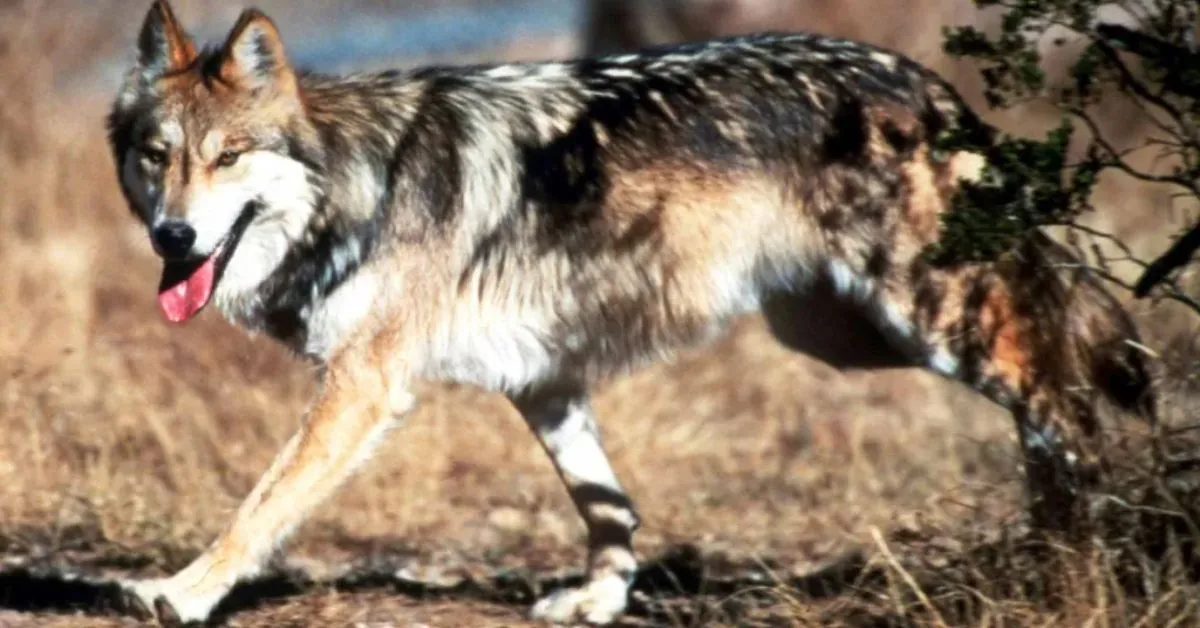Wildlife officials announced a reward of more than $100,000 for information leading to a prosecution for the potential killing of a protected wolf in Arizona.
The U.S. Fish and Wildlife Service reported the discovery of a dead female Mexican gray wolf, federally protected under the Endangered Species Act, northwest of Flagstaff, Arizona, on November 7. The agency did not disclose further information on the animal’s cause of death but did state that “the mortality was not related to agency management actions.”
According to a statement from the United States Fish and Wildlife Service, wildlife officials are investigating the event and offering a reward of up to $103,500 for information that leads to “successful prosecution” in the case.
The government is offering a reward of up to $50,000, while the Arizona and New Mexico Game and Fish Departments each give up to $1,000. According to the U.S. Fish and Wildlife Service, a “variety of nongovernmental organizations and private individuals” have also committed extra funds for a total reward of $51,500.
“Killing a Mexican wolf is a violation of state law and the Federal Endangered Species Act and can result in criminal penalties of up to $50,000, and/or not more than one year in jail and/or a civil penalty of up to $25,000,” the Fish and Wildlife Service of the United States warned in a statement issued Thursday.
U.S. Fish and Wildlife Service special agents in Pinetop, Arizona are asking anyone with information to call.
Wildlife officials first documented deceased wolf over the summer
This Article Includes [hide]
This summer saw the capture, fitting of a GPS collar, and release of the wolf, known as F2979, back into the wild. The wolf had been discovered outside of the Mexican Wolf Experimental Population Area, a defined area in central and southern Arizona and New Mexico where conservation efforts for the species are concentrated.
According to the US Fish and Wildlife Service, a DNA examination confirmed that the wolf dispersed from a pack in the experimental population region. The agency later spotted her traveling with another Mexican gray wolf in the vicinity and initiated efforts to return the pair to the experimental population area.
The organization reported that these efforts were still in progress when they discovered the dead wolf. The fate of the other Mexican gray wolf that was observed with her is unclear.
In July, the Western Watersheds Project, an Idaho-based charity dedicated to safeguarding watersheds and animals in the West, posted photographs of the wolf, known as Hope, wearing a tracking collar and having a wellness check.
This was Hope at the time she was collared in July 2024, in photos WWP received from a public records request. We don’t…
Posted by Western Watersheds Project on Saturday, November 16, 2024
“In every photo we saw of Hope, her collar was plainly visible. If she was shot, the shooter had to know she wasn’t a coyote,” Cyndi Tuell, Arizona and New Mexico director at Western Watersheds Project, said in a statement. “If someone killed Hope, the full weight of the federal and state law should be brought to bear against the person or persons who took her away from our human community which found inspiration and joy in her existence, and from the non-human community that depends upon top predators to bring balance to the landscape.”
Mexican gray wolf population has grown over recent years
According to the Wolf Conservation Center, Mexican gray wolves are among the most endangered mammals in North America. By the mid-1980s, hunting, trapping, and poisoning had nearly wiped off the subspecies.
The US Fish and Wildlife Service stated that the agency and its partners began efforts to protect the subspecies in 1977 through a bi-national captive breeding program that began with “just seven Mexican wolves.” The Endangered Species Act allowed for the reintroduction of wolves into the wild in 1998.
Defenders of Wildlife, a nonprofit conservation organization, stated that the subspecies used to range in territories ranging from central Mexico to the southwest United States, including Utah, Colorado, and Texas.
Only southern Arizona and southwestern New Mexico now contain them, according to Defenders of Wildlife.
In March, the United States Fish and Wildlife Service reported that the wild population of Mexican wolves “saw another year of growth in 2023.” In 2023, a population census revealed a spread of at least 257 Mexican wolves between Arizona and New Mexico, a 6% increase from the 242 wolves recorded in 2022.
“This increase marks the eighth consecutive year of population growth, the longest continuous streak since recovery efforts began,” the agency said in a statement.







Leave a Reply